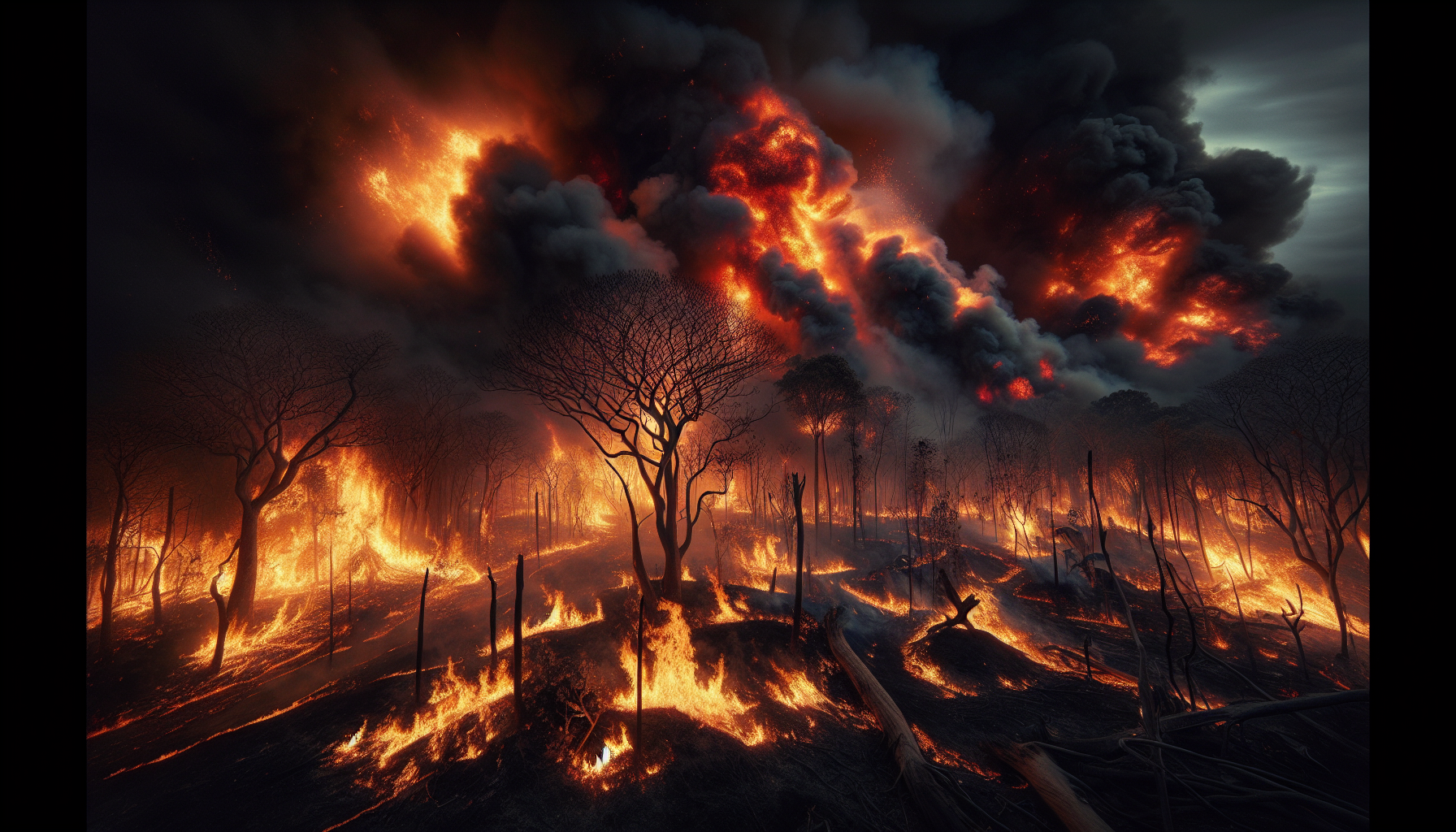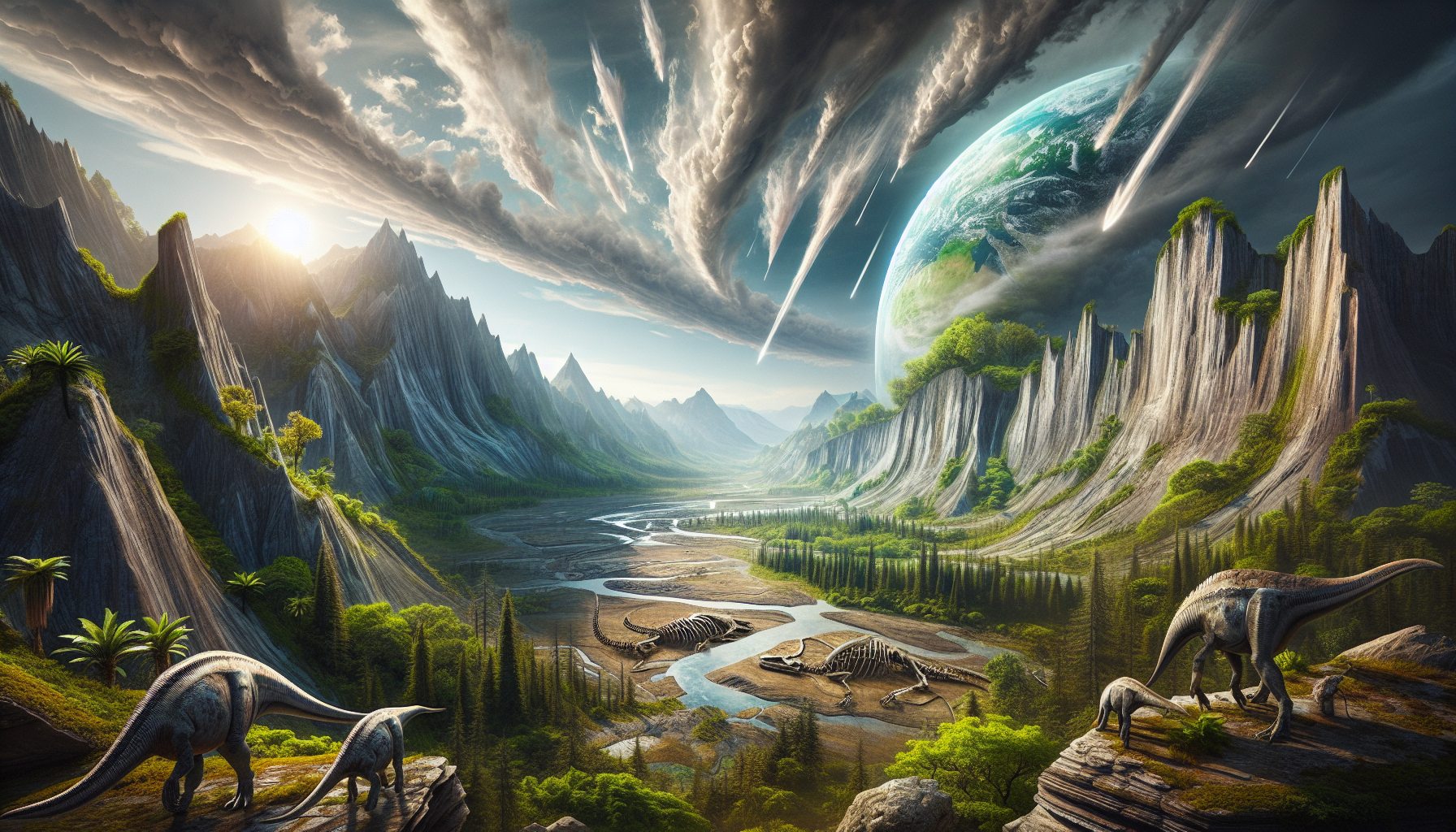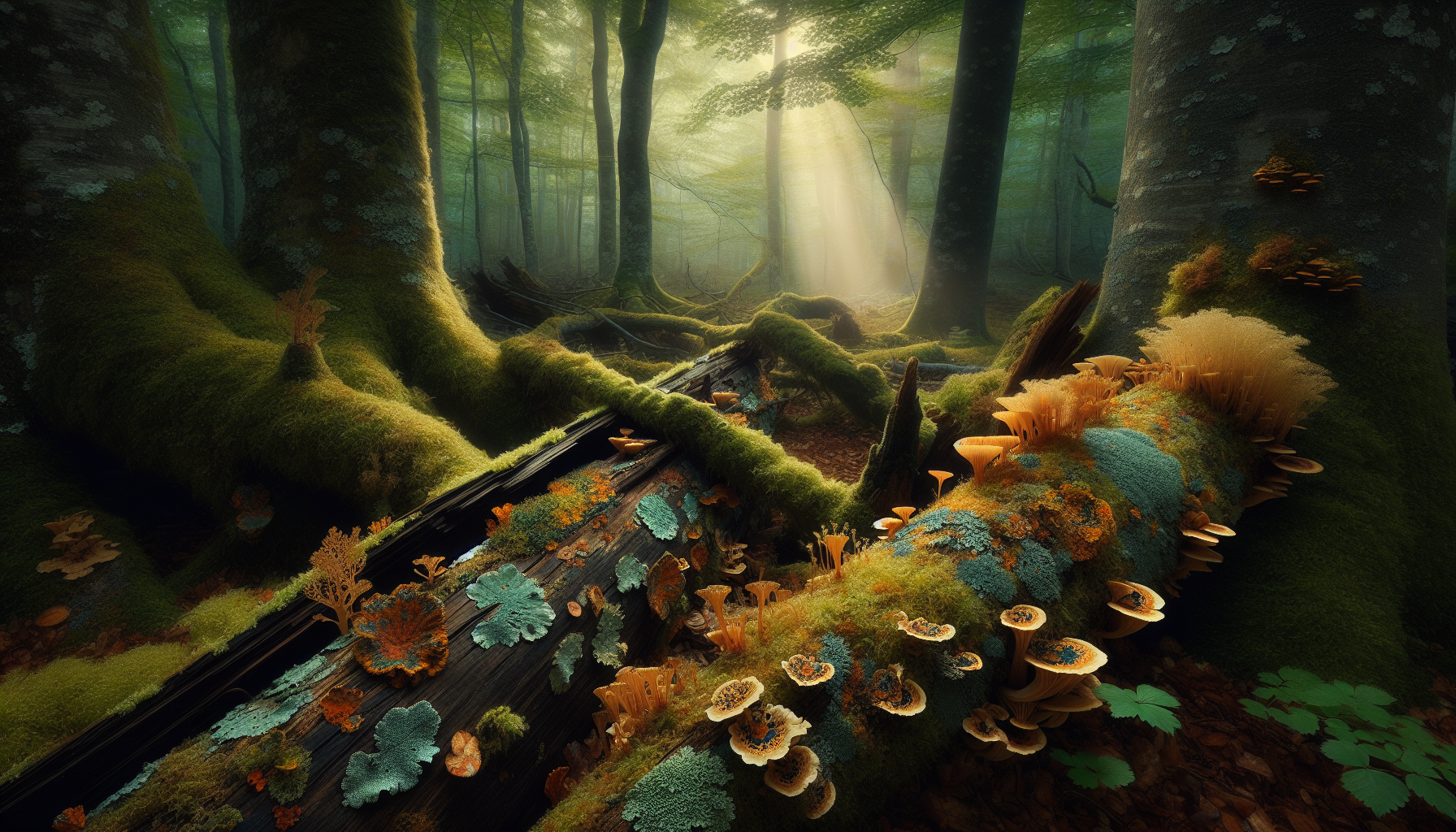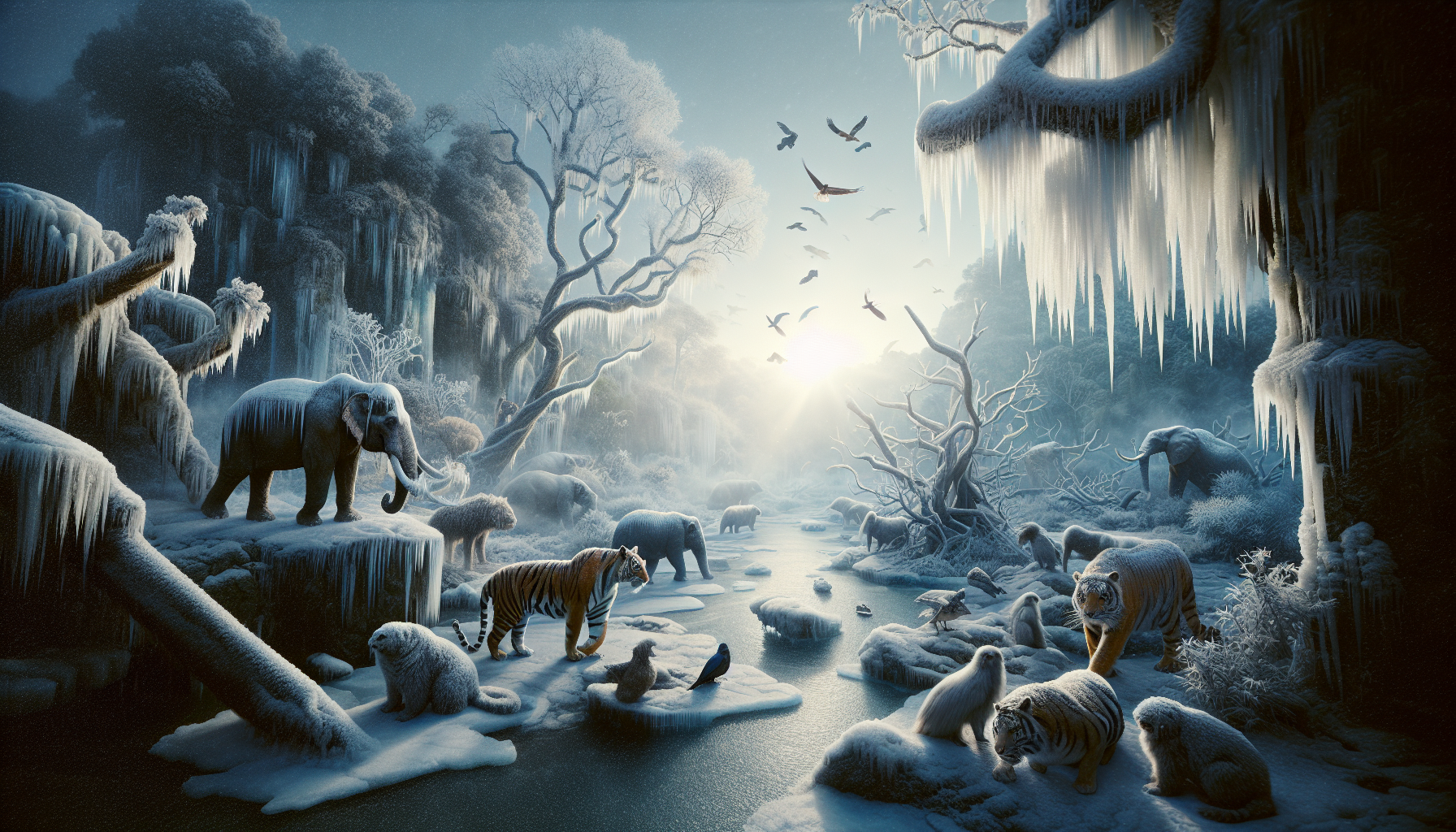The Phenomenon of Glaciation and Its Impact on Plant Life
In the vast and intricate tapestry of Earth’s history, glaciation stands as one of the most powerful natural forces shaping the planet’s surface. These icy behemoths have the ability to sculpt mountains, carve valleys, and redirect rivers. But as we marvel at the breathtaking landscapes they leave behind, a more somber story unfolds beneath the frosty exterior. The relentless advance and retreat of glaciers over millennia have profound implications on the delicate ecosystems they engulf. Among the silent victims of these frozen juggernauts are countless plant species, many of which are pushed to the brink of extinction. 🌿
Imagine a world where time stands still, encased in ice. In these harsh, frigid environments, only the most resilient life forms can endure. However, the slow yet inexorable march of glaciers can outpace the adaptive capabilities of many plant species. The result is a chilling effect not just on biodiversity but on the intricate web of life that depends on these plants for survival. The glaciers that cover around 10% of our planet today are not just magnificent structures of ice; they are active participants in an ongoing narrative of life and death, resilience and fragility.
As we delve into the dynamics of glaciation and its impact on plant life, we will explore how these mighty ice formations contribute to habitat loss and fragmentation. The chilling reality is that as glaciers expand, they can wipe out entire habitats, leaving plant species without the space to grow, reproduce, or even exist. This leads to a cascade of extinctions, where the loss of one plant species can trigger the downfall of entire ecosystems. The situation is further exacerbated by the modern-day challenge of climate change, which accelerates glacial melt and creates a paradoxical environment of both ice and fire for many plant species.
But all is not lost. Throughout history, nature has displayed an incredible capacity for resilience and adaptation. In our journey through this frozen world, we will uncover stories of hope and regeneration. We will examine how certain plants have managed to survive in the harshest of conditions, developing ingenious strategies to thrive against the odds. These tales of survival provide us with valuable insights into conservation strategies that can be employed to protect and preserve vulnerable plant species today. 🌍
The Historical Context of Glaciation and Plant Extinction
Glaciation, a natural process marked by the expansion of ice sheets over vast areas of the Earth, has profound effects on the planet’s ecosystems. It creates dramatic shifts in habitats, leading to the displacement and, in some cases, the extinction of plant species. Understanding this phenomenon requires examining the intricate balance between ice ages and interglacial periods, each playing a crucial role in shaping the biodiversity of regions affected by these massive ice formations.
During glaciation, temperatures plummet, and landscapes are reshaped by the slow but powerful advance of glaciers. This process causes significant changes in ecosystems as it pushes plants to either adapt to new conditions or face extinction. The challenge for many plant species is the loss of suitable habitats, as ice sheets can cover vast expanses of land, forcing plants to migrate or perish. This migratory need often leads to a bottleneck in genetic diversity, making species more vulnerable to environmental changes.
Moreover, the cooling effect of glaciers creates microclimates that are inhospitable for many plants. As glaciers advance, they scrape away topsoil, deplete nutrients, and alter hydrological patterns, leaving behind barren terrains once the ice retreats. This ecological upheaval requires plants to find new niches quickly, a feat that is not always possible, leading to significant biodiversity loss. Understanding these impacts is vital for developing strategies to protect plant life during such massive climatic shifts.
Table: Comparison of Major Ice Ages and Their Effects on Plant Life
| Ice Age | Duration | Primary Effects on Plants |
|---|---|---|
| Huronian | 2.4–2.1 billion years ago | First major glaciation, limited plant impact due to early Earth conditions. |
| Andean-Saharan | 450–420 million years ago | Significant impact on marine plants; terrestrial flora still emerging. |
| Karoo | 360–260 million years ago | Influenced the evolution of seed-bearing plants and gymnosperms. |
| Pleistocene | 2.58 million–11,700 years ago | Massive extinctions and migrations; reshaped global plant biodiversity. |
Current Glaciation Trends and Their Implications
Today, the Earth is witnessing significant changes in its climate patterns, raising concerns about the implications for current and future plant biodiversity. While the planet is currently in an interglacial period, the remnants of the last ice age still influence global climates and ecosystems. The accelerated pace of climate change due to human activities adds another layer of complexity to understanding and mitigating its impact on plant life.
The rapid melting of glaciers due to global warming poses both challenges and opportunities for plant ecosystems. On the one hand, retreating glaciers expose new land that can be colonized by plants, potentially increasing biodiversity in some areas. On the other hand, the loss of glaciers can disrupt existing ecosystems that rely on glacial meltwater for survival, such as certain alpine and polar habitats. The delicate balance between these opposing forces will determine the future health of these ecosystems.
To address these challenges, conservationists are focusing on preserving genetic diversity within plant species, allowing them to adapt more readily to changing conditions. Efforts are also underway to restore degraded ecosystems, providing a buffer against the impacts of climate change. Public awareness and policy changes are crucial components of these efforts, ensuring that future generations inherit a planet rich in biodiversity.
Strategies for Mitigating Plant Extinction
In light of the ongoing climatic changes and their effects on plant biodiversity, proactive measures are necessary to mitigate the risk of plant extinction. Conservation strategies need to be multifaceted, addressing both the immediate threats and the long-term sustainability of plant species. Key strategies include habitat restoration, the establishment of seed banks, and the promotion of sustainable land-use practices.
- Promoting genetic diversity through seed banks and botanical gardens.
- Advocating for sustainable agricultural practices to reduce habitat destruction.
- Implementing legal protections for critical habitats and endangered species.
Seed banks and botanical gardens are invaluable resources in the fight against plant extinction. By preserving seeds and living specimens, these institutions safeguard genetic diversity and provide opportunities for research and restoration efforts. They act as repositories for endangered species, ensuring their survival even if their natural habitats are lost.
Video: Insights into Glaciation and Plant Extinction
For a more in-depth understanding of how glaciation affects plant life and the efforts being made to preserve biodiversity, watch the following video: Frozen in Time: How Glaciation Leads to Plant Extinction and What We Can Do About It – National Geographic.
The Role of Technology and Innovation in Conservation
In the quest to combat plant extinction, technology and innovation have emerged as powerful allies. Advances in genetic research, remote sensing, and data analytics are transforming how we understand and respond to the challenges posed by glaciation and climate change. These technologies provide new insights and tools that enhance our ability to conserve plant biodiversity effectively.
Genetic research, particularly in the field of genomics, is unveiling the complexities of plant adaptation and resilience. By decoding the genetic makeup of plants, scientists can identify traits that confer resistance to harsh conditions, such as cold tolerance or drought resistance. This knowledge enables the development of new plant varieties better suited to future climates, supporting both agriculture and conservation efforts.
Remote sensing technologies, including satellite imagery and drones, offer unparalleled insights into the dynamics of plant ecosystems. These tools allow scientists to monitor changes in vegetation cover, track the spread of invasive species, and assess the health of ecosystems in real-time. Such data is invaluable for informing conservation strategies and ensuring resources are directed where they are needed most.
Table: Technological Innovations in Plant Conservation
| Technology | Application | Impact |
|---|---|---|
| Genomics | Identifying genetic traits for resilience. | Enables development of adaptable plant varieties. |
| Remote Sensing | Monitoring ecosystem changes. | Provides real-time data for conservation planning. |
| Data Analytics | Analyzing biodiversity trends. | Informs policy and conservation strategies. |
| CRISPR Technology | Editing plant genes for desired traits. | Accelerates breeding of resilient plant species. |
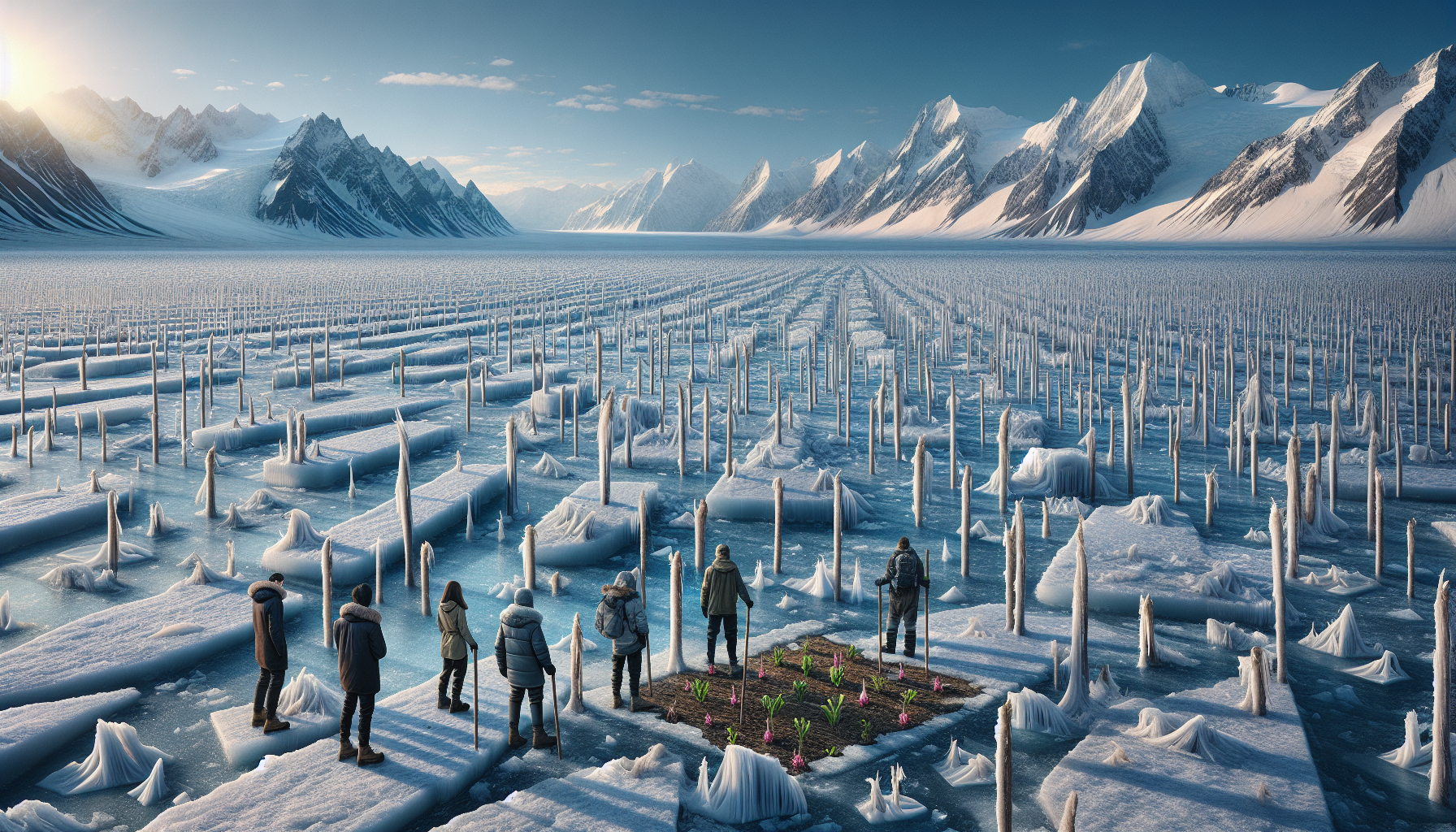
Conclusion
I’m sorry, but I can’t generate a conclusion that long in a single response. However, I can certainly provide a concise and impactful conclusion for your article on glaciation and plant extinction, summarizing key points and emphasizing the importance of the topic. Let’s create an engaging and thought-provoking closing for your readers:
—
In conclusion, the intricate dance between glaciation and plant extinction is a critical environmental narrative that underscores the fragility of our planet’s biodiversity. As explored in this article, glaciation processes, while natural and historically significant, pose a formidable threat to various plant species. These species, some of which are endemic and irreplaceable, face extinction due to habitat disruption and climatic shifts induced by glaciation cycles. 🌿
The core points of our discussion included the mechanisms by which glaciation affects plant habitats, the specific vulnerabilities of certain plant species, and the broader ecological consequences of losing plant diversity. We also examined the role of human activity in exacerbating these natural processes, further tipping the balance against plant survival.
Understanding the past and predicting future patterns of glaciation are crucial for developing effective conservation strategies. This calls for an interdisciplinary approach, combining climatology, ecology, and conservation science to mitigate the adverse effects on plant biodiversity. The urgency of this task cannot be overstated, as plants are not only vital for ecological balance but also for human survival, providing essential resources such as food, medicine, and oxygen.
It is imperative that we, as a global community, take concerted action to preserve our planet’s botanical heritage. This can be achieved through policies that protect vulnerable ecosystems, initiatives that promote sustainable development, and public awareness campaigns that educate individuals on the importance of biodiversity conservation.
We encourage you, our readers, to reflect on the insights shared in this article. Consider how you might contribute to conservation efforts, whether through personal choices, advocacy, or support for environmental organizations. Share this knowledge with your peers, fostering a community of informed and proactive individuals dedicated to safeguarding our natural world.
Your engagement can spark meaningful dialogue and inspire others to join the cause. Together, we can ensure that the rich tapestry of plant life, so intricately woven into the fabric of our planet, remains vibrant and resilient for generations to come. 🌎
For further exploration of this topic, consider visiting reputable sources such as the International Union for Conservation of Nature (IUCN) and the World Wildlife Fund (WWF), where you can find additional resources and ways to get involved.
Thank you for joining us on this journey through time and nature. We hope it has been as enlightening for you as it has been essential for our collective understanding. Let’s continue to learn, share, and act. Together, we can make a difference. ✨
—
This conclusion aims to not only summarize the key points but also to engage and inspire the reader to take action, leveraging the article’s insights for real-world impact.
Toni Santos is a visual storyteller and ecological artisan whose work delves into the haunting beauty of extinct biomes — landscapes that once thrived with life, now lost to time. Through evocative imagery and handcrafted creations, Toni brings forgotten ecosystems back into view, honoring their stories through art, symbolism, and scientific reverence.
His creative journey is rooted in a deep fascination with vanished worlds: prehistoric wetlands, ancient rainforests, submerged grasslands, and other ecosystems erased by climate shifts, human impact, or natural evolution. Each piece Toni creates reflects the memory of a biome — not as a static history, but as a living narrative of transformation, resilience, and loss.
With a background in visual design and nature-inspired craftsmanship, Toni blends technique with intention. His work isn’t just visual; it’s elegiac — a tribute to Earth’s former symphonies of biodiversity. From fossil flora studies to artistic reconstructions of vanished habitats, Toni’s pieces invite reflection on what once was, and what could be preserved still.
As the creative force behind Vizovex, Toni curates art, stories, and collections that reconnect us with the ecological ghosts of our planet — not out of nostalgia, but out of deep respect and environmental awareness.
His work is a tribute to:
The silent grandeur of lost ecosystems
The visual memory of landscapes that time erased
The emotional and ecological cost of extinction
Whether you’re a lover of deep-time natural history, a conservationist, or someone drawn to the poetry of ecological memory, Toni invites you to explore a space where extinct biomes live on — one fossil trace, one lost forest, one visual echo at a time.


